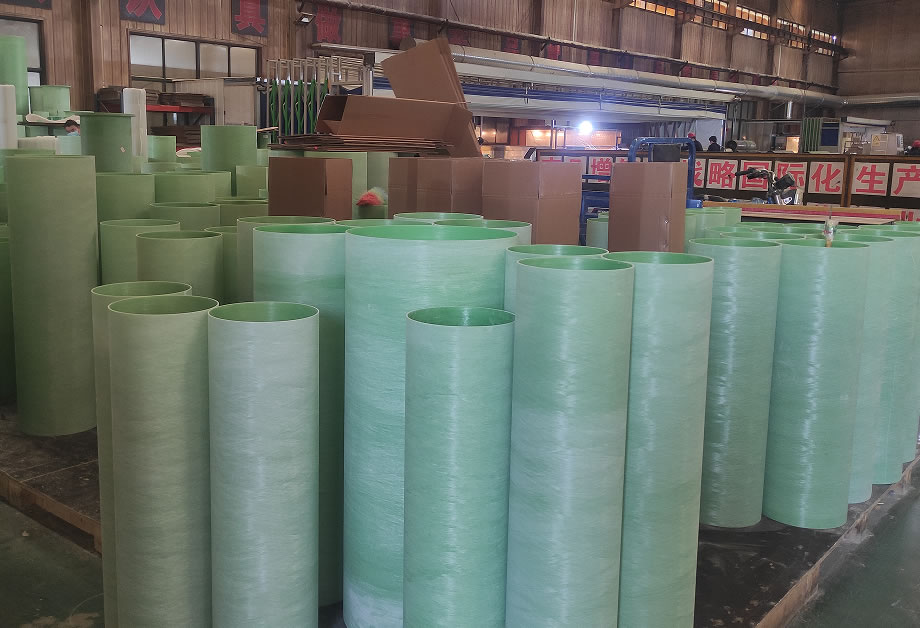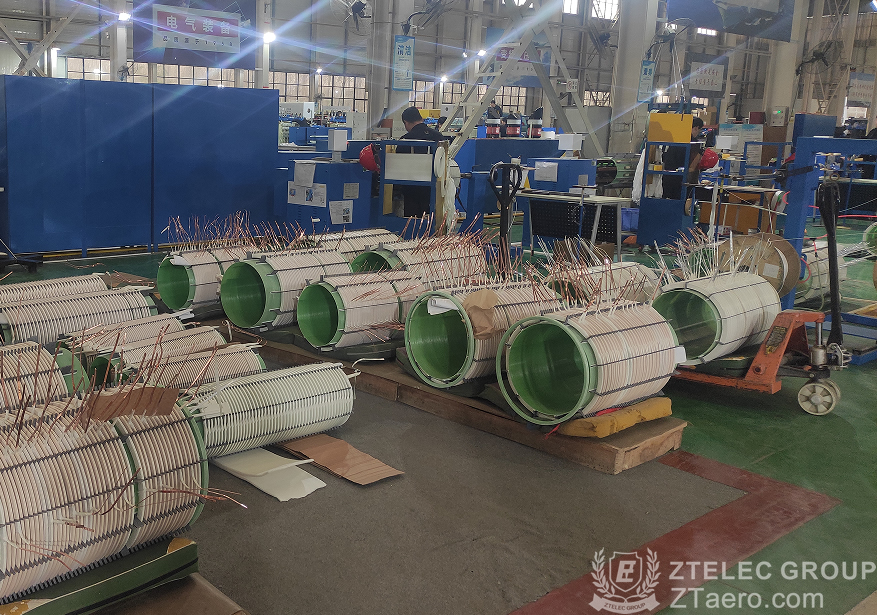Epoxy Fiberglass Filament Wound Tube is a composite material tube with epoxy resin as matrix and glass fiber as reinf...
Epoxy Fiberglass Filament Wound Tube is a composite material tube with epoxy resin as matrix and glass fiber as reinforcement material. It is widely used in the field of power transformers for insulating structural parts and supporting parts due to its excellent insulation, mechanical strength and high temperature resistance. The following is a detailed description of its application, technical characteristics and selection method:

In transformers, epoxy fiberglass wound tubes mainly play the following roles:
Main insulation tube: used for insulation isolation between high-voltage winding and low-voltage winding or between winding and iron core to prevent discharge and short circuit.
Typical scenarios: oil-immersed transformers, dry-type transformers, reactors, etc.
Supporting structure: as a winding skeleton or fixed bracket, it bears the mechanical stress of the winding (such as electromagnetic vibration, short-circuit impact force).
Cooling system oil guide pipe: in oil-immersed transformers, it is used to guide the circulation of insulating oil, and has both insulation and oil corrosion resistance functions.

The core advantage of epoxy fiberglass winding tube in transformers comes from its material and process design:
1. Electrical performance
High insulation strength:
The power frequency breakdown voltage can reach 30~50 kV/mm (much higher than ordinary insulation materials).
Surface resistivity >10¹² Ω·cm, volume resistivity >10¹⁴ Ω·cm.
Anti-partial discharge: There is no air gap after epoxy resin is cured, reducing the risk of partial discharge.
2. Mechanical properties
High strength: tensile strength 300~600 MPa (close to alloy steel), compressive strength 200~400 MPa.
Deformation resistance: low thermal expansion coefficient (1.5~2.5×10⁻⁶/℃), good dimensional stability at high temperature.
3. Temperature resistance
Long-term working temperature -60℃~155℃ (H-level insulation), short-term tolerance 180℃ (such as overload conditions).
4. Environmental resistance
Resistant to transformer oil, moisture (moisture absorption rate <0.1%), UV resistance (suitable for outdoor transformers).
5. Lightweight and processability
Density 1.8~2.0 g/cm³, 60%~70% lighter than metal, can be customized in complex shapes (such as flanged, slotted structure).
The selection needs to comprehensively consider the electrical parameters, mechanical load and environmental conditions of the transformer:
1. Electrical parameter matching
Voltage level:
Low voltage transformer (<35 kV): wall thickness ≥5 mm, no special inner shielding layer.
High voltage transformer (≥110 kV): conductive layer shielding needs to be added (such as coating semi-conductive paint), wall thickness ≥10 mm.
Insulation margin: According to the requirements of standards (such as IEC 60076), the breakdown voltage should be 2~3 times higher than the working voltage.
2. Mechanical parameter design
Bending strength: According to the calculation of winding weight and electromagnetic force, select the fiber winding angle (±55° to enhance bending resistance).
Seismic requirements: The hoop tensile strength (≥400 MPa) needs to be improved in earthquake-prone areas.
3. Environmental adaptability
Temperature: For high temperature environments (such as tropical areas), high temperature resistant epoxy resins (such as anhydride curing systems with TG≥130℃) are selected.
Humidity: In high humidity environments, moisture-proof coatings need to be added or low moisture absorption resins (such as bisphenol F epoxy resins) need to be selected.
4. Structural customization
Inner diameter and wall thickness: Determined according to winding size and insulation distance, for example:
Inner diameter = winding outer diameter + 10~15 mm (reserved safety gap).
Wall thickness = (working voltage/kV) × 0.3~0.5 mm (empirical formula).
Flange connection: used for test transformers that need to be disassembled frequently.
Gluing and fixing: Commonly used in dry-type transformers, high-temperature resistant epoxy adhesives are required.
Certification and standards
International standards: IEC 60893 (insulating materials), IEEE C57.12.91 (transformer design).
Domestic standards: GB/T 1303 (epoxy laminates), JB/T 501 (insulating parts for power transformers).
Application scenarios: 110 kV oil-immersed power transformers
Selection parameters:
Inner diameter: 600 mm, wall thickness: 12 mm, length: 2000 mm.
Epoxy resin type: bisphenol A type (oil-resistant, resistant to 155°C).
Fiber winding angle: ±55° (bending + compression optimization).
Additional functions: inner wall coated with a semi-conductive layer (homogenized electric field distribution).
Process control: The curing temperature and time must strictly follow the requirements of the resin system to avoid stratification or bubbles.
Installation protection: avoid mechanical scratches (affecting insulation performance), and install anti-collision corner guards during transportation.
Life assessment: Regularly test dielectric loss (tanδ) and partial discharge, and replace when aging is serious.
Summary
Epoxy glass fiber winding tube is an irreplaceable key insulation component in the transformer. The selection should be based on electrical safety, combined with mechanical strength, environmental tolerance and customization requirements. Through scientific design (such as finite element simulation optimization) and strict quality control, the reliability and service life of the transformer can be significantly improved.
If you are interested in our products,, please send us a message and we will contact you as soon as we receive it. Email: info@ztaero.com whatsApp: +8616650273778